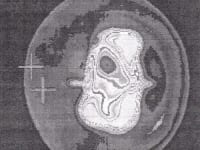
Our company, IEMT, has patented technology for a portable and comparatively low cost medical imaging device that, for the first time, can be placed in the hands of first responders and professional practitioners.
IEMT's imaging device incorporates advances, previously untapped for such applications, as well as thoughtful and clever design. The result is a single, unified medical platform which can obtain detailed, full-body images on site, then transmit them quickly, accurately and at low cost to hospitals or other destinations without the disadvantages of more expensive medical imaging equipment.
This concept sets the stage for a line of medical imagers that can be offered to both undersold and unaddressed markets. Furthermore, this family of imagers will be positioned to compete with current “Big Box” imaging products in both existing and future markets. When considering the price point and limitations of current imaging devices, IEMT affords excellent margin possibilities.
Without a doubt, imaging ranks as one of the most important tools utilized by the medical community. Every day, physicians in hospitals and private radiological practices across the country and around the world make use of medical imagery of all sorts to diagnose disease, prescribe and monitor treatment regimens and for a variety of other life saving purposes.
And, without exception, the cost of such imaging equipment is anywhere between $200,000 and $3,000,000 per unit. IEMT imagers will break this price barrier.
Additionally, this equipment entails significant post-procurement maintenance and calibration costs and comes with attendant disadvantages such as the use of ionizing radiation, application of dyes and tracers, use of ultrastrong magnetic fields and invasive procedures. The facilities which house such equipment are very specialized, requiring specific construction techniques, shielding, higher power requirements and structural strengthening of floors.
Because of these complications, medical imagers are simply not available to most of those medical professionals who really need them. Examples of this include first responders, physicians in private practice and medical professionals in remote locations. Thus, there exists a very large, underserved market, not just domestically but worldwide as well.
But suppose high quality, inexpensive, low power, physically robust and simple to operate medical imaging equipment were available. Such imagers could revolutionize emergency medical care if put into the hands of local EMTs deployed to accident sites. Physicians in rural communities would have access to patient imagery that currently is only accessible to select few medical institutions, such as hospitals, which could be hours away even by medical helicopter. First Responders arriving to serve avalanche victims in the remote backcountry would be able to diagnose internal injuries.
Real time imaging data could then be transmitted from a remote site directly to attending physicians at the medical facility. With this technology, patients could be diagnosed even before they are admitted. Treatment could begin immediately when patients arrive, saving precious seconds.
-
Awards
-
 2016 Top 100 Entries
2016 Top 100 Entries
Voting
-
ABOUT THE ENTRANT
- Name:Al Messano
- Type of entry:teamTeam members:Al Messano
Mandeep Singh - Profession:
- Number of times previously entering contest:2
- Al's favorite design and analysis tools:ANSYS
- For managing CAD data Al's company uses:None
- Al's hobbies and activities:sports, reading, gardening, drawing
- Al belongs to these online communities:LinkedIn
- Al is inspired by:The possibility of providing medical professionals with a diagnostic tool where and when they need it, without the need for specialized environments, cumbersome equipment or procedures that interfere with lifestyle.
- Patent status:patented





